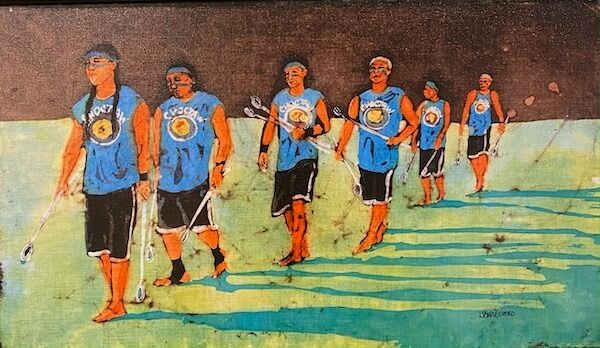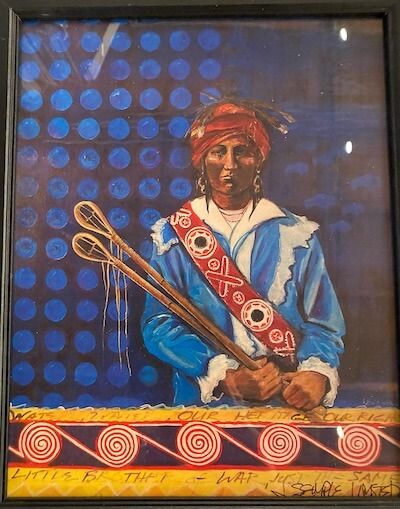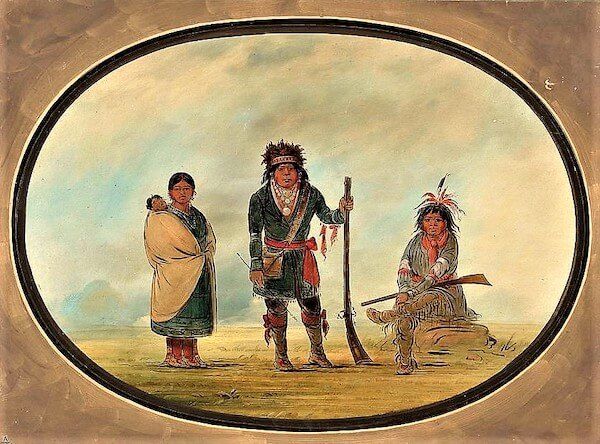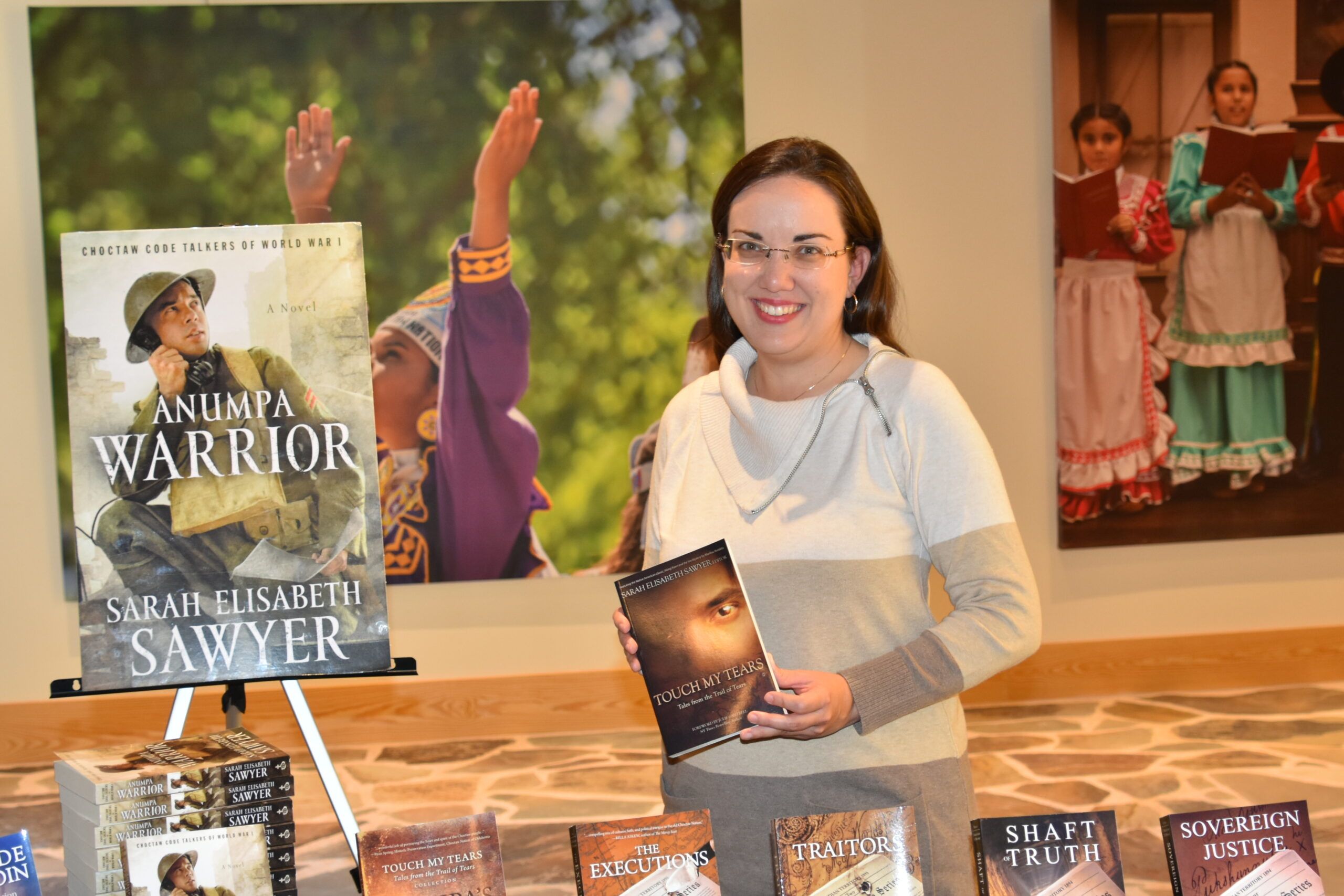
How can you write about Native Americans without offending someone, or totally botching the culture?
As a Choctaw Nation of Oklahoma tribal member and a full-time author, I have a unique understanding and empathy for authors who attempt to write about Native Americans.
In my years as an instructor at writing workshops and conferences, one thing amazes me time and again: how many hard-working authors there are. You are among those willing to put in the merciless hours it takes to research and write stories that can impact the world for the good.
Here’s some news: I want you to write about Native Americans, because the truth is, the Indigenous people of North America are woven into the fabric of the global narrative—past, present, and future. We need this shared story written, accurately and respectfully. We need more authors telling honest stories.
You can do that no matter what genre you’re in. I’ve taught authors in fantasy, romance, historical fiction, contemporary, young adult, action/adventure, and more. You can do this.
All that said, I still see a ton of mistakes authors—Native and non-Native alike—make when writing about Native Americans.
Before we dig into those 7 mistakes to avoid when writing about Native Americans, let me say this: If you’ve done any of these, don’t despair. You can use what you learn here to take forward in your writing. Or backward, if you have the flexibility of making changes as an indie author.
Are you ready? Take a deep breath and let’s dig into those 7 mistakes together:

This may shock you given the dominant politically-correct term, but many Natives in Indian Country prefer the term “Indian.”
It’s still used in numerous Native-run and Native-influenced organizations in North America, such as the Smithsonian’s National Museum of the American Indian. But because people used the word “Indian” in a derogatory way for so long, you need to take great care if you use it.
“Native American” is the term we are commanded to use today, even though some Natives reject it. I use Native American often when communicating with a broader audience because of the fear instilled in people that you can’t use anything else. You’ll hear me interchange Native American and American Indian, along with Indigenous, Native, and Indian. There is also “First Nations,” primarily used for Indigenous people in Canada.
I spend considerable time breaking down the history and usage of the various terminology in my digital course, Fiction Writing: American Indians. In short, all of the above terms are acceptable to certain people, depending on the setting and context.
My favorite term right now is “First Americans,” and a new museum agrees. You can find the First Americans Museum in Oklahoma City, Oklahoma.
The most accurate and correct way is to refer to someone by their tribal affiliation. For me, that’s Choctaw. Rather than say, “I’m Indian,” I say, “Chahta sia hoke. I am Choctaw.”
It’s best not to call a character “Native American.”
It’s better to call them by their specific tribal affiliation.
Given the blend of American Indian cultures today, it’s tempting to create a patchwork Native character of no specific tribe.
We have intertribal powwows, shared ancestral knowledge and practices, and similar, often traumatic, historical experiences. But because these generalities are easy to rely on, it makes it all the more important to avoid them.
I’ve had authors tell me they are writing a Native American character in their story and when I ask what tribe, they don’t know. And that’s okay if you’re just getting your story rolling and know you want Native characters but haven’t developed the backstory for them. It’s something I do encourage you to decide pretty early on because tribal distinctions can have significant implications for your story.
Just to name a few:
According to the Bureau of Indian Affairs, there are 574 federally recognized tribes in the United States (2020). Each tribe typically has its own officials, councils, law enforcement, health care systems, geographic location, history, and more. Some tribal governments are located on reservations; other tribes have boundaries based on county lines. All tribes have a distinct culture and heritage.
So I encourage you to be distinct with your Native character. Choose which tribe (or tribes) they are part of and use that specific culture to influence the person they are in your story.
Writing Native American characters in the fantasy and sci-fi genres is a bit different.
You may want to blend tribal customs, regalia, and histories to create a unique, undefinable Indigenous people group in your fantasy worlds. Still, the same cautions apply. I’ve seen the stereotypes and abuses in these two genres as with others when it comes to Native Americans.

Avoid adding Native characters to your cast simply to round things out.
It makes them a token rather than an individual. The character is there in a stereotypical role, usually the “wise guide,” and has no arc or character development. No dreams or fears or goals of their own.
When an author does this, they miss a huge opportunity to add depth to the story. You get a cardboard character ticking a box on society’s checklist rather than a living, vibrant soul who draws your reader in, keeps them up at night, and leaves them asking for more stories from you.
And as storytellers, clamor from our readers is often what gets us to the keyboard each day. We want to deliver a level of entertainment that brings our readers back to us time and again. They want stories with themes and meaning and a heartbeat they feel within themselves.
Strive to create characters who add to your story, no matter their ethnicity.
We could camp out on the topic of stereotypes all day and all night. When it comes to Native Americans, the list is just about endless. I include 12 stereotypes in my digital course, Fiction Writing: American Indians:
Let’s explore the last one on this list, one I rarely hear talked about. It’s what I call a “historical-only view,” the underlying perception that American Indians have all but disappeared from the face of the earth. Though not directly stated, descriptions and attitudes hold a sense that Native peoples are in the past. There is no future for them, and very little of them in the present. In fact, here’s a common question I hear about, especially from people outside the U.S., “Do tribes still exist today?”
One of the best ways to avoid this stereotype is to cultivate a genuine interest in learning how to write about the people you’re basing your characters on.
I cover “5 Stereotypes to Avoid When Writing about Native Americans” in my value-packed e-book that authors can download for free at FictionCourses.com/AmericanIndians.

When I read a book that includes Native people, I always check the author’s notes at the end.
I’m curious about what led them to write the story, how they did their research, and who they reached out to in the process. When there is no mention of input from the tribal people themselves, that surprises me, especially in modern history books about the very tribes themselves.
Granted, it’s not easy to make connections within a tribe if you have none starting out. But I encourage you to work with the tribe you are writing about if you can. Make friends in that culture.
There are some insights you should know going in because so much has been stolen from Native communities. It takes a deep awareness to build relationships. You may find people guarded if you jump right into, “Hey, I’m writing a novel, can I ask all about your people?”
But if you build trusting relationships, you may open a door to ask for your connection(s) to read your manuscript for fact-checking. If they offer positive feedback, consider asking for an endorsement.
You’re probably saying: this is a mistake?
I actually encourage authors away from enlisting sensitivity readers. Those who do may find themselves relying on 1 or 2 people speaking for an entire race, culture, and history.
One example of this is a story I read recently about a popular TV show. In the show, a sacred ceremony was performed by someone of that tribe who gave approval on doing the ceremony publicly. But the tribe’s cultural council objected to it.
So when writing Native American characters, know that you will face differing opinions, and ultimately have to decide what you will or won’t include in your story.
Back to sensitivity readers: I have fellow authors ask me about being a sensitivity reader for their books with Native American characters. The thing is, I’m Choctaw. Ours is the tribal history I know best. Beyond generalities, I couldn’t offer input on a story that features another tribe.
For my own fiction, there are Choctaws I trust who read my books before publication. They are checking for historical accuracy and also point out anything that feels “off.” Since I do my deep research, there usually aren’t many, if any, issues.
Here’s a mistake that was done for one reason in the past, and quite a different reason today.
In the past, we lacked diverse characters in fiction largely because the target audiences were white.
Today, writers are leaving out Native Americans because they are afraid to include them.
I think this is what happened with the new version of Peter Pan. In the classic animated Peter Pan, we have the ridiculous representation of Native people. In the new version, Native Americans were eliminated almost entirely. Tiger Lilly is played by a white actress, ironically harkening back to the days when Native characters were often played by whites.
After being in one ditch for so long, writers have jumped the road and landed in the other, a ditch remarkably similar to the first.
I understand the fear, though. Authors are under the gun, threatened with firestorms of controversy that could destroy all they’ve worked hard for. Some authors are forced to eliminate Native American characters by their publisher. Others are genuinely afraid of getting it wrong and causing more hurt.
I’m helping writers get out of the ditches and onto the road to writing balanced stories. Because ultimately, I believe authors should be judged on the quality of their writing, not on their race or ethnicity.
Recently, I heard of one Native author who asked other writers to “please write about us.” That hit me in the heart. I set out to teach authors how to write about Native Americans primarily because so many already are, and they are looking for guidance to do it right.
But the Native author’s statement brought me back to my core reason for teaching on this topic: I want to see more stories that include accurate, beautiful, honest portrayals of Native Americans in fiction.
Are you one of those authors? If so, I hope you’ll connect with me on the journey through my course for authors:
Through my digital course, Fiction Writing: American Indians, you learn how to avoid all 7 of these mistakes and much, much more. Authors around the world are gaining knowledge and confidence to write Native characters. I invite you to become one of them.
Chi pisa la chike, my fellow author. I will see you again soon.
Follow me on Social Media:
About the Author
As a tribal member of the Choctaw Nation of Oklahoma, Sarah Elisabeth Sawyer has written and published 15 historical fiction books with Native main characters, and over 275 non-fiction articles on Native artists and organizations with representatives from dozens of North American tribes. The Smithsonian’s National Museum of the American Indian honored her as a literary artist through their Artist Leadership Program for her work in preserving Choctaw Trail of Tears stories, and she is a First Peoples Fund Artist in Business Leadership alumni.
Through her Fiction Writing: American Indians digital course, authors are equipped to write authentic stories that honor First Americans history and culture. Discover more by visiting her here, where you can download a free copy of “5 Stereotypes to Avoid When Writing about Native Americans.”